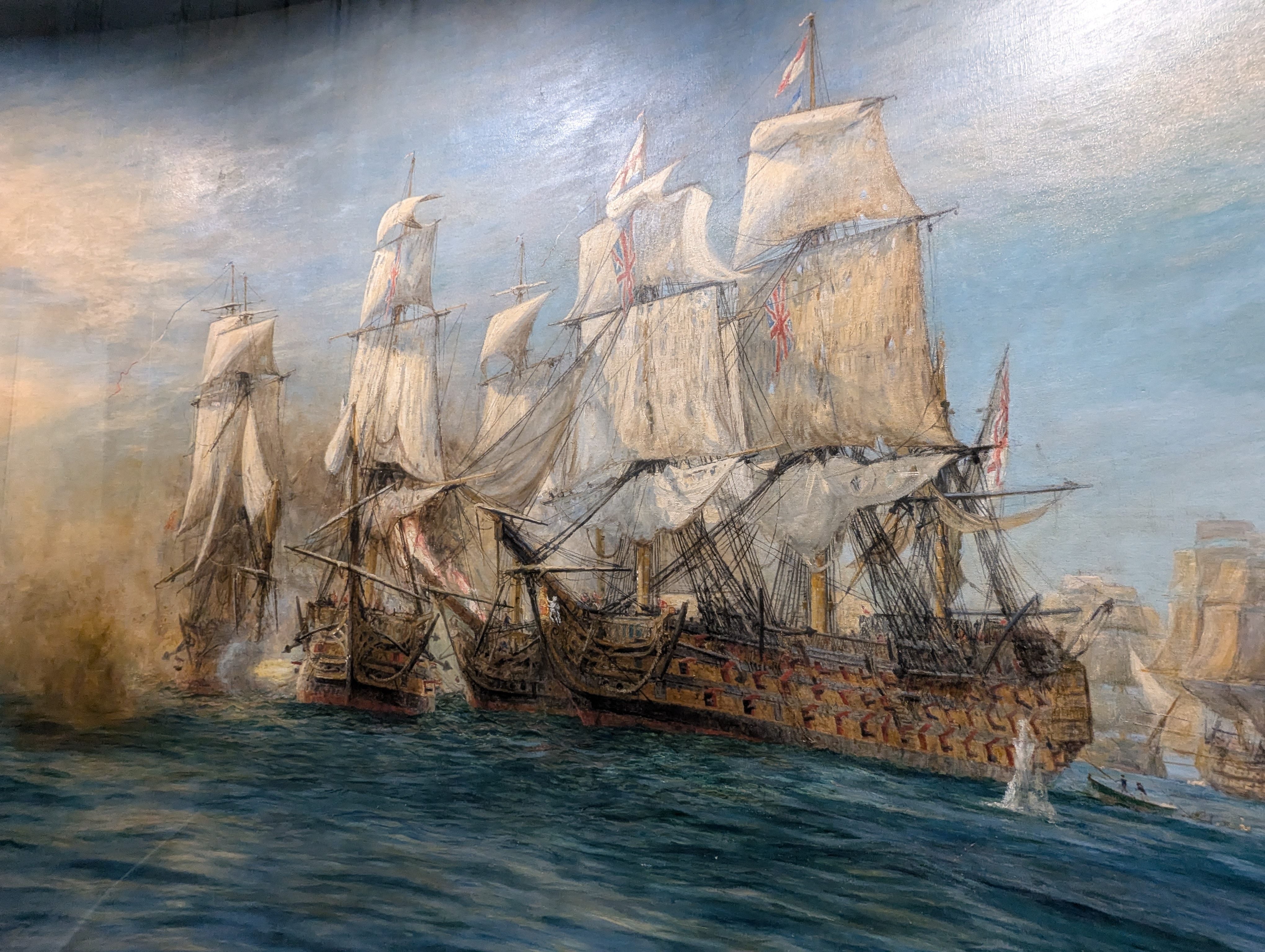Trafalgar Day 2024: HMS Victory after Trafalgar and W.L. Wyllie
- View news filtered by: Napoleonic
- View news filtered by: War and Peace
- View news filtered by: Battles
- View news filtered by: Trafalgar Day
- View news filtered by type: Blog

Join the National Museum of the Royal Navy as we launch a new digital series for Trafalgar Day - covering the life of Vice-Admiral Lord Horatio Nelson, the man behind the title, the history of the Battle of Trafalgar, and the enduring legacy of 21 October 1805. This week’s focus is the fate of HMS Victory following the battle, and the unlikely assistance from Royals and artists, before next week’s dives into a blow by blow of the battle.
HMS Victory’s life after Trafalgar
HMS Victory was already 40 years old by the time of the Battle of Trafalgar, and had narrowly avoided being turned into a hospital ship. Wood is a natural material without a long lifespan, and HMS Victory had undergone various reconstructions and repairs prior to 1805. She was not the Royal Navy’s first choice to be the Nelson’s flagship, despite this she was used to great effect, crashing through the French line and playing a key role in defeating a larger enemy.
After the battle, Victory was so badly damaged that she had to be towed to Gibraltar for repair. Victory had many roles over the next 25 years, whether it was transporting troops, or housing prisoners. She entered active service again in 1817 but never saw another battle, instead becoming the flagship for the Admiral in charge of Portsmouth Dockyard.
By the 1830s HMS Victory was in a sorry state, and the Admiralty ordered her to be broken up. There was a huge public outcry, this prevented her being broken up but there was still no real work being done to ensure her preservation. In 1854 she sank and was raised again shortly afterwards. By the early 1900s she had narrowly avoided sinking two more times. Again, there were proposals for her to be broken up, this time prevented by none other than King Edward VII.

A step change
Everything changed in the 1920s, in early 1922 HMS Victory was towed into Dry Dock 2 at Portsmouth Harbour (itself now a scheduled ancient monument) where she still resides today. By Trafalgar Day 1922 the Society for Nautical Research (first formed in 1910) launched the “Save the Victory Campaign”. The campaign was a success and a major repair project was undertaken that meant HMS Victory could be formally opened to the public by King George V in 1928.
One of the founding members of the Society for Nautical Research was William Lionel Wyllie, one of the most influential maritime artists of his time. Wyllie was a member of the Royal Academy, and today his paintings are currently in the collections of various institutions, including the Tate and the National Maritime Museum. What may be less known is that he vigorously campaigned for HMS Victory, and his greatest contribution was the final painting of his career, The Battle of Trafalgar Panorama.
The Battle of Trafalgar Panorama
Painted and gifted specially to assist with the preservation of Victory, the huge 13 metre by 4 metre panorama took 9 months to complete. Wyllie, then nearly 80 years old, worked full-time on the painting, often climbing ladders to reach the canvas. He was assisted by his daughter Aileen, who later said “At the time it seemed natural, but now that I am old, I cannot think how he did those hours on ladders in his 79th year.”
The panorama was also designed to be as accurate as possible, a snapshot of the battle. In the centre is HMS Victory, locked in a dead struggle with the French Redoutable. The panorama depicts the height of the battle, 2pm on the 21st October 1805, 45 minutes after a French marksman spotted Vice-Admiral Lord Nelson pacing the quarterdeck and took the fatal shot. HMS Victory is flanked by HMS Temeraire, which defended the ship during Nelson’s move to smash through the French line. Temeraire itself is the centre point of perhaps the most influential British painting ever, The Fighting Temeraire by J.M.W. Turner, depicting a fate HMS Victory narrowly avoided.

To get this accuracy Wyllie studied the logbooks of the ships, to understand the position of the sun and where the ships would’ve been during the battle. He even took a trip to Cape Trafalgar to understand the colours of the sea and sky. The panorama was opened to the public by King George V in 1930. It was perhaps Wyllie’s greatest work and would turn out to be his last.
The Battle of Trafalgar Panorama was painted in-situ and is still available to view today in the Victory Gallery in Portsmouth. Interactive elements also allow you to learn the history of the painting, and the different ships and events depicted in it.